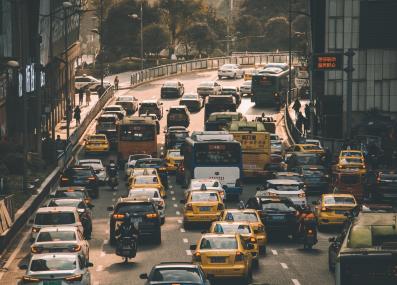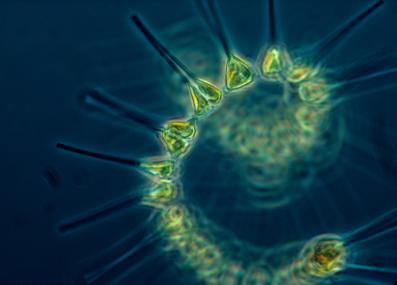Have a question?
Does the carbon dioxide that humans breathe out contribute to climate change?
No: our breathing is part of a closed loop of carbon, which passes into and out of the atmosphere as plants and animals absorb and release it.
February 22, 2024
We inhale oxygen; we exhale carbon dioxide (CO2). This simple story of human respiration is one many of us remember from grade school science class. And because humanity’s CO2 emissions are driving climate change, it’s natural to wonder whether all the carbon people breathe out is warming the planet, especially as the global population climbs.
As MIT professor of biology Penny Chisholm explains, though, we can breathe easy: Human respiration does not contribute to climate change.
That’s because the CO2 humans exhale is part of a closed loop. During the process of photosynthesis, plants take in CO2 from the air and soil and store the carbon in their tissues. When people eat those plants, or eat the animals that ate those plants, we ingest that carbon. And that’s the carbon in the CO2 we eventually breathe out. Once we exhale it, it returns to the atmosphere, and the cycle begins again.
“There's no net increase in CO2 in the atmosphere, because it just came from the atmosphere via plants, went into you, and went back out,” Chisholm says.
The same goes for the carbon we carbon-based lifeforms store in our bodies. When we die, Chisholm says, that carbon will return to the Earth’s atmosphere once microbes break us down. (Our non-carbon atoms go into the soil and fertilize plants.)
This natural “fast carbon cycle” has been at work all through Earth’s history. The problem arises when some other source of carbon, outside of this closed loop, hijacks the system. This is happening today with humanity’s use of fossil fuels. When humans mine coal or drill for oil, and then burn these fuels for energy, we release carbon that had been safely stored deep within the Earth and would not have naturally re-entered the atmosphere for many thousands or millions of years.
“We're burning it in a century,” says Chisholm, “and the system is not equipped to deal with it that quickly. It’s all about timescales.”
Consider the “bathtub metaphor” for climate change, she says. In this metaphor, the planet is a tub, and CO2 is water. This water is being added to the top of the tub at the same time it is draining from the bottom. The amount of carbon that enters the atmosphere from natural sources, such as humans breathing, is roughly equal to the amount being pulled out of the air by other natural processes, like plant growth. Thus, the amount of water in the tub stays the same.
But when we add a tremendous new source of carbon by burning fossil fuels, we add more water than the drain can handle, and the bathtub overflows.
So the growing population of human beings, which has now topped 8 billion, isn’t warming the planet by breathing more. What population growth does mean is that we’re using more resources: we’re using more energy, driving more cars, and clearing more forests for farmland, all of which hijacks the fast carbon cycle and contributes to climate change. Fortunately, these are all things we can change by using clean energy and transportation, restoring forests, and growing food in more carbon-neutral ways.
Thank you to several readers for sending in related questions, including Allan of Australia; Manoj Chakyar of Perinthalmanna, India; and Hildegard Keller-Kern of Pasching, Austria.
Submit your own question to Ask MIT Climate
Get the latest from Ask MIT Climate monthly in your inbox








